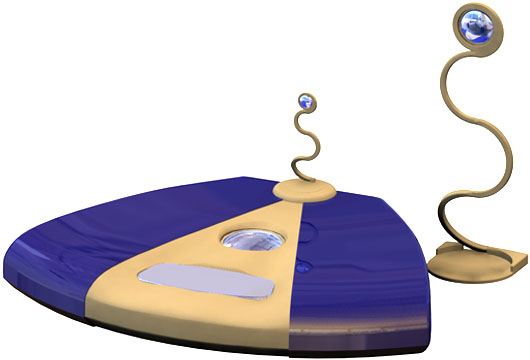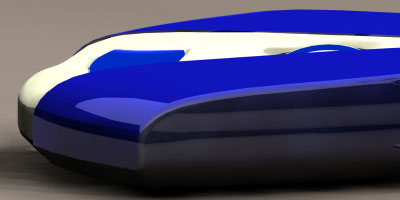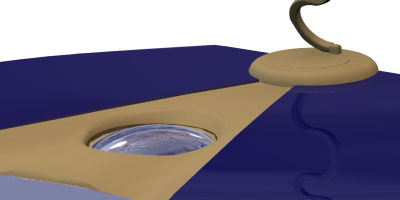
About the Project
The objective of this conceptual project is to design a residential robot. The purpose is to develop an appropriate language and form for the robot’s designed task - the actual operation was not required.
This is a group project of Damien Hortsing and Hiroyuki Shibata.
Concept
The main user group of this product is business travelers. Many business travelers have difficulty sleeping in hotel rooms. Noise or even unfamiliar quietness, or unfamiliarity of a hotel room may keep them awake. This robot’s task is to provide a familiar and comfortable environment for a good night’s sleep, and to wake up the user comfortably.
So, how is it supposed to work?

As mentioned above, the actual operation was not required. This is a conceptual project to practice using appropriate language and form in product design. In this context, we suppose that this "robot" work as described below.
Sensors
This robot has two sensors; one folded and stored in the hinge and the other one, which works remotely on the other side of the bed, is folded and stored beneath the robot's main body. These two units monitor the user's eye movement to detect REM sleep. To wake up the user comfortably, the robot activates a wake up program during the REM sleep period closest to the wake up time. The projector provides dim light and gradually increases it. The speakers provide comfortable sound, energetic music, or radio.

Sound
The robot is equipped with two tweeters on the front and two base speakers on both sides of the covers. Opening the cover create an airspace which enhances the base effect. These speakers work either for calming sound or music, or for noise cancellation.

Image
The robot's projector provides familiar or calm images according to the user's choice. The images may be of their family, home, the ceiling of their bedroom, their pets, or natural scenery.

